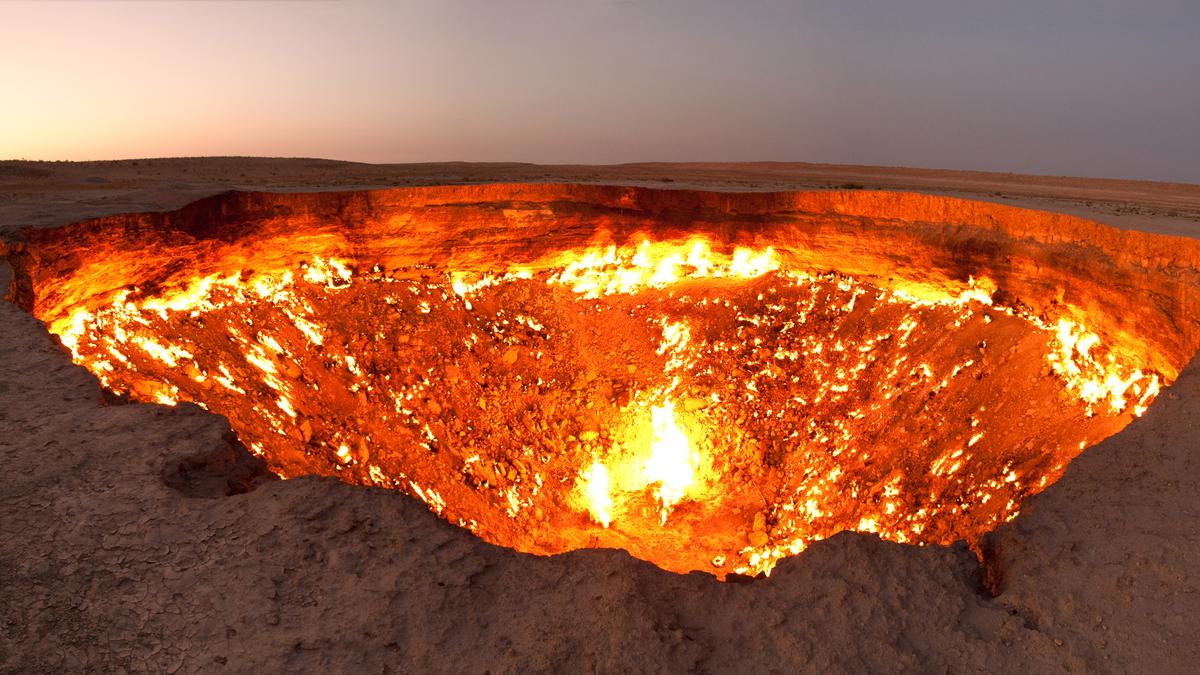Imagine a gaping, fiery crater in the middle of a barren desert — so deep it looks like an entrance to another world. This is the Darvaza gas crater, famously called the “Door to Hell,” blazing in Turkmenistan’s Karakum Desert. Spanning about 70 metres across and 30 metres deep, it has burned with relentless heat and flames for more than 50 years.
How was it formed
Believe it or not, this fiery pit is a man-made phenomenon. Back in 1971, Soviet geologists were drilling for natural gas when the ground suddenly collapsed, creating a massive crater. Fearing the spread of dangerous methane gas, they decided to set it on fire, expecting it to burn out in a few weeks. But the plan backfired — decades later, it’s still burning!
What’s inside the crater
The crater’s interior is a searing inferno of flames fuelled by methane-rich natural gas continuously escaping from underground reserves. There’s no water or vegetation inside — only a barren pit with charred rock and soil. The fire has burned away any organic matter, leaving an almost alien landscape of glowing embers and flickering flames. At night, the inside looks like a giant cauldron of fire against the dark desert sky.
Spiders in the inferno?
Some reports claim that spiders have been spotted near the crater, seemingly surviving the extreme heat and gas-filled environment. While this hasn’t been scientifically confirmed, it adds to the eerie and mysterious aura of the Door to Hell.
A tourist attraction
Despite the danger and blazing heat, the Door to Hell has become a fascinating spot for adventurous travelers. It got its name because of its fiery appearance especially at night. Visitors come from around the world to witness the fiery crater, especially at night when the flames cast an eerie, otherworldly glow over the Karakum Desert. Guides often take tourists to safe viewing points, making it a surreal experience that combines natural wonder, science, and a touch of danger.
The end of a fiery era?
Also known as the “Shining of Karakum,” the Door to Hell has mesmerised visitors for over 50 years. Recently in June, some reports suggested that the flames might slowly be fading, and this fiery wonder could finally be extinguished soon — marking the end of an era for one of the world’s most surreal natural spectacles.
Other “hellish” sites
Mount Hekla, Iceland
Known as the “Gateway to Hell” in medieval Europe due to its frequent eruptions.
Avernus Lake, Italy
An ancient volcanic crater lake, believed by Romans to be the entrance to the underworld.
Cave of the Dead, Mexico
Some caves with natural gas emissions earned nicknames like “Portals to the Underworld.”
Published – October 27, 2025 11:32 am IST
